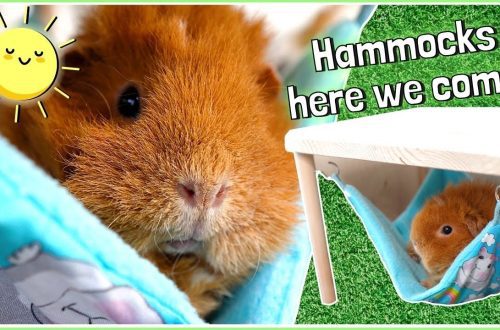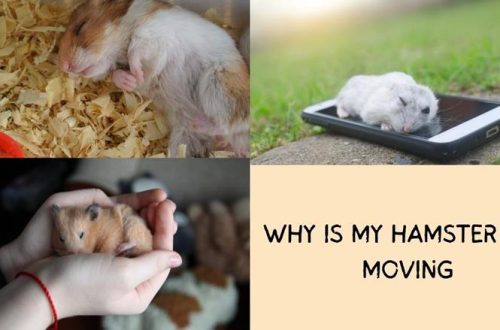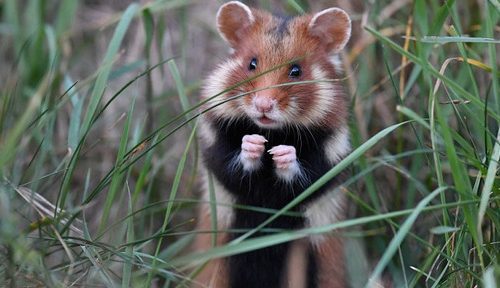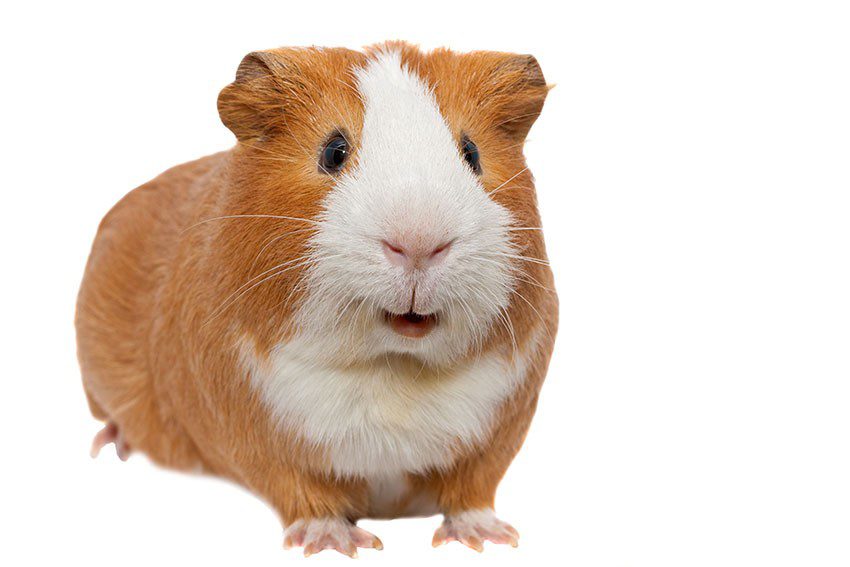
Short haired guinea pigs
Short haired guinea pigs are divided into several varieties.
Contents
smooth-haired guinea pig
Distinctive features of this breed of short-haired guinea pigs: the length of the coat close to the body does not exceed 3 cm. The body is massive, the shoulders are broad, the body is stocky and round, the head is large and heavy, the nose is rather thick, with a hump, the eyes are black and bulging, the ears are hairless and long, located quite far from each other. Optimal weight: 900 – 1100 gr. An exterior flaw is a rosette, a partial rosette, a comb, protruding bundles of wool.
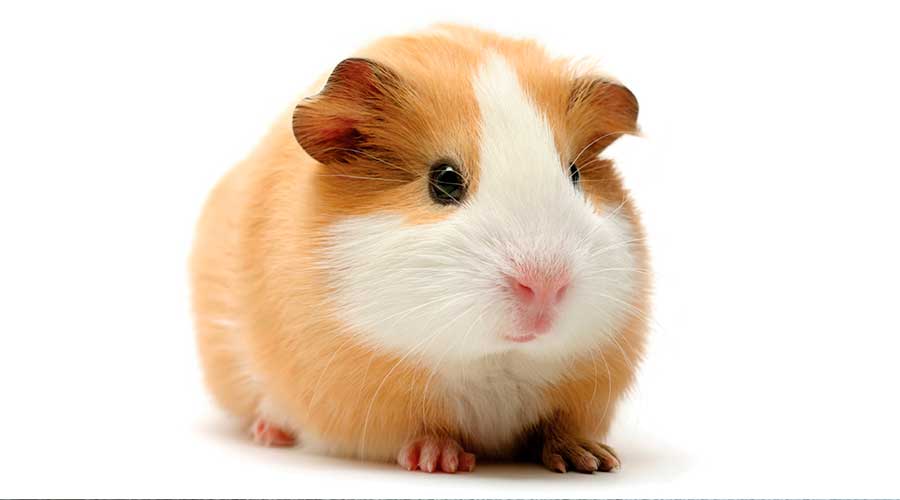 In the photo: smooth-haired guinea pig
In the photo: smooth-haired guinea pig
Satin (satin) guinea pig
This variety of short-haired guinea pigs was bred in the USA in the 70s of the last century, and soon spread to Europe. The thin and short hair of these pigs lies close to the body, silky to the touch, shiny and bright. The latter is due to the fact that the outer hair is more transparent, thinner and therefore better able to reflect light. Exterior flaws: dwarfism, not shiny coat. Satin-coated guinea pigs can be bred with ordinary guinea pigs, so the presence of non-satin ancestors in the pedigree is acceptable.
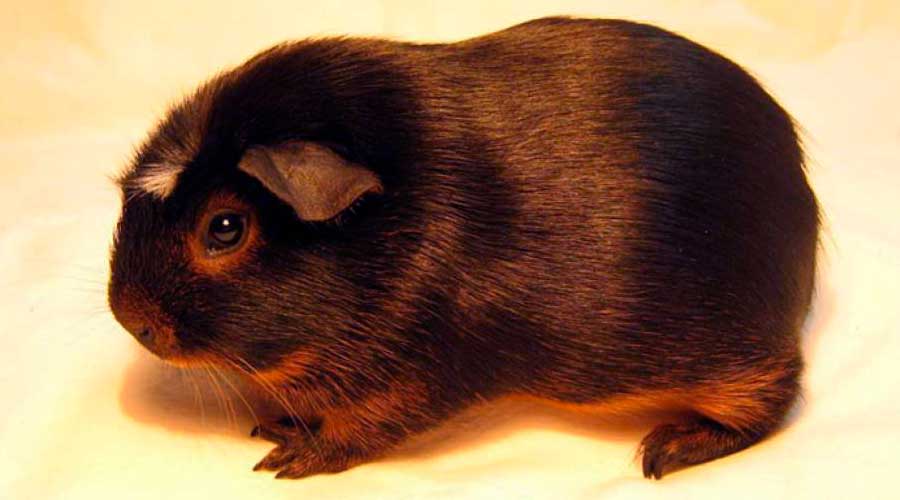 In the photo: satin (satin) guinea pig
In the photo: satin (satin) guinea pig
Crested guinea pig (crested)
The alternative name (crested) is associated with the presence of a tuft (rosette) on the head. A crest is a rosette (regular circle) growing from a point in the middle of the forehead. These short-haired guinea pigs were bred in 1972 in America, from there they “migrated” to Canada, and then conquered Europe. Crested guinea pigs are also divided into 2 varieties: English crested (or simply crested) and American crested.
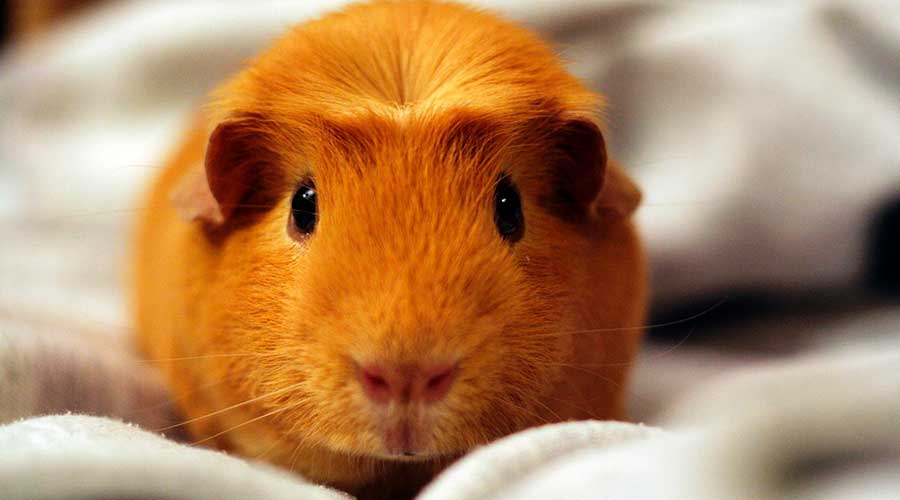 In the photo: crested guinea pig
In the photo: crested guinea pig
The crest may match the ground color, but American Crested guinea pigs have a white crest that can contrast with the ground color. However, other white spots are unacceptable. In any case, the tuft must be bright and evenly colored. Otherwise, the body color corresponds to smooth-haired guinea pigs. Disadvantages: a non-circular rosette, a tuft offset from the center of the forehead, a rosette resembling a bald patch.
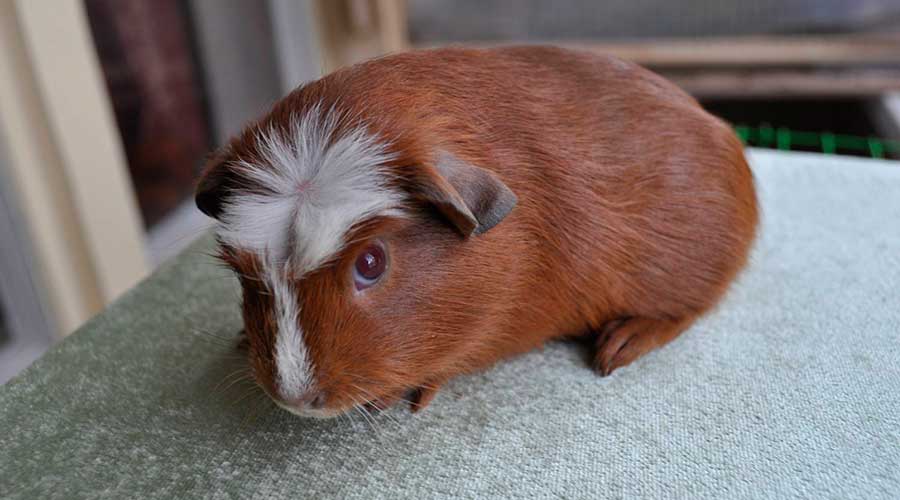 In the photo: crested guinea pig
In the photo: crested guinea pig
Rosette (Abyssinian) guinea pig
This breed of short-haired guinea pigs was popular already in the 19th century, but the original version of the breed is considered lost, since the current rosette pigs are a cross between Peruvian and smooth-haired. And sometimes smooth-haired cubs appear in the litter. The coat is hard, its length should not exceed 4 cm (preferably up to 3,5 cm). There can be 10-12 rosettes on the body: on the back, shoulders, back, but quality is more important than quantity. Rosette on the nose is welcome, but may be absent. The silhouette of rosette guinea pigs resembles a square, in general the animal looks symmetrical. Disadvantages: pointed or rough head hair longer than 4 cm hair unequal in length flat or too soft hair lack of crests or crooked crests of the rosette are asymmetrically double or broken rosettes. Rosette guinea pigs should not be crossed with long-haired animals or pigs with rosettes of other shapes. In general, almond-shaped eyes are not allowed in guinea pigs, but they are allowed in rosette animals.
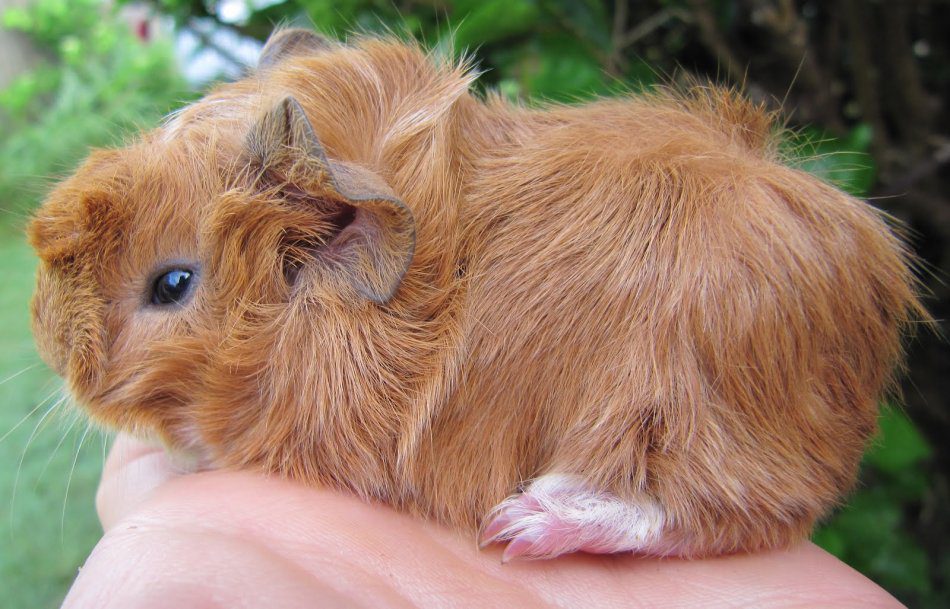 In the photo: rosette guinea pig
In the photo: rosette guinea pig
Rex
A characteristic feature of this variety of short-haired guinea pigs: thick, curly and very dense wool, the length of which is 17 mm. Wool stands upright, without tilt and deflection. The muzzle is decorated with a sinuous mustache. This variety was first described at the beginning of the 20th century, but it was formed as a breed much later. The entire population of Rex came from 1 litter of curly guinea pigs born in 1975. Disadvantages: long hair (longer than 2 cm), “collapses” along the spine, elongated body, light skeleton, straight mustache, damp lower eyelid.
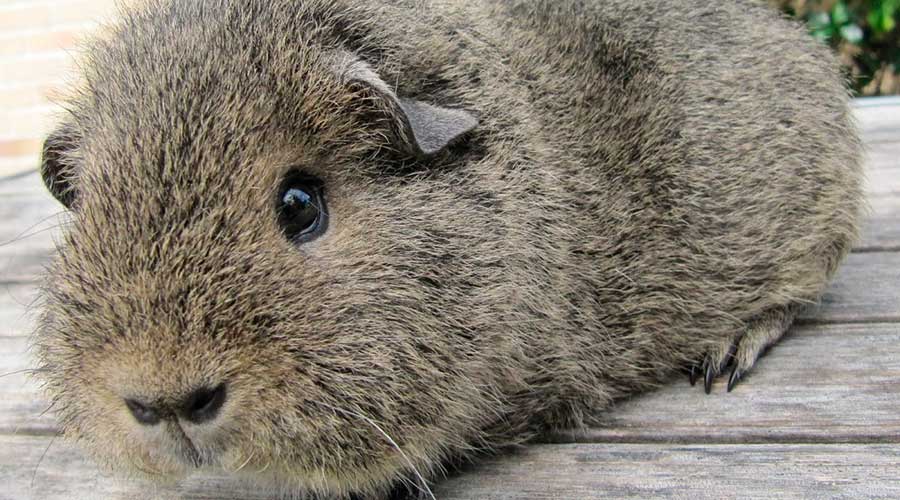 In the photo: Rex guinea pig
In the photo: Rex guinea pig
Teddy
These short-haired guinea pigs were bred in Canada in the 60s of the 20th century. These animals resemble teddy bears, thanks to which they have become very popular. Teddy’s coat is upright and thick, which makes them reminiscent of Rex, and sometimes these varieties are difficult to distinguish from each other. But a careful look will notice that the teddy’s hair is tougher, thicker, and the protruding hairs on the muzzle resemble needles. But sometimes animals with softer hair appear. Disadvantages: elongated body, hair longer than 2 cm or with a slope.
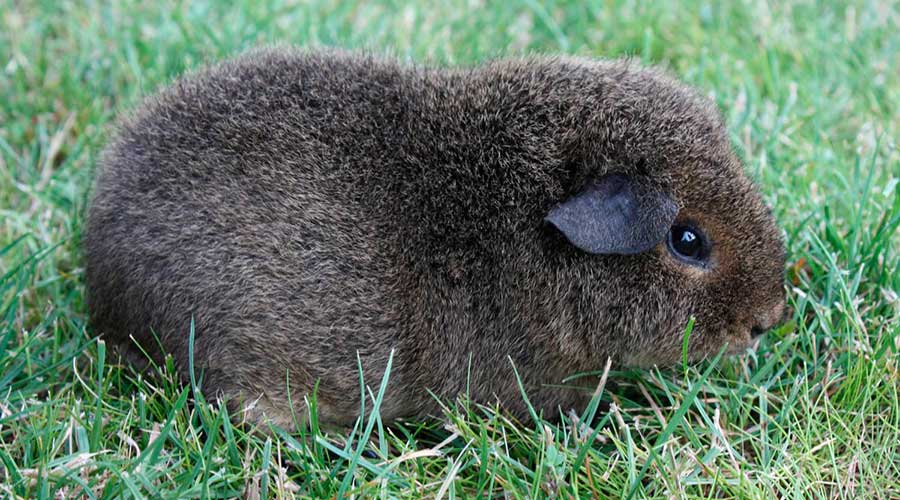 In the photo: short-haired guinea pig Teddy
In the photo: short-haired guinea pig Teddy



